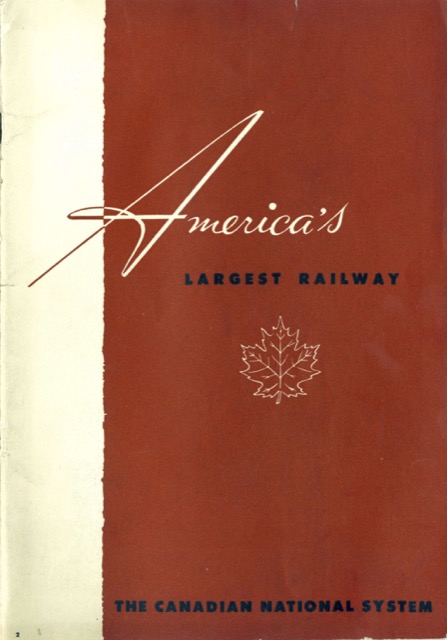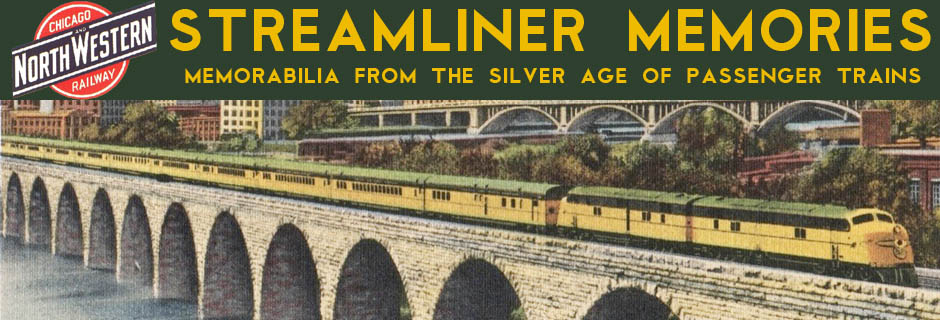This booklet seems to have been issued solely to extoll the virtues of socialized railroading. While the Canadian Pacific had received capital subsidies, it was operationally profitable. After it was built, the Canadian government continued to subsidize new rail construction, including the Grand Trunk Pacific, Canadian Northern, and Intercolonial. None of these were operationally profitable, so between 1918 and 1923 they were combined into the government-subsidized Canadian National Railways.
 Click image to download a 23.3-MB PDF of this 54-page booklet.
Click image to download a 23.3-MB PDF of this 54-page booklet.
While this booklet isn’t dated, a map in the back is dated November 11, 1949, and the most recent data cited in the booklet is from 1949. So the booklet itself must have been published in 1950. Photos show steam-powered passenger trains and Diesel-powered freight trains along with hotels, steamships, and telecommunications centers.
The booklet noted that, “Much of the mileage is at present unprofitable for the C.N.R., but is maintained as a necessity in the national economy.” “Necessity” is always liberally interpreted by politicians. As Wikipedia observes, “The result of various governments using CNR as a vehicle for various social and economic policies was a subsidization running into billions of dollars over successive decades.” After shedding many of its branch lines, however, CN became mostly profitable after 1978 and was privatized in 1995.

The critical question, then, is if the economic benefits (direct and indirect) of the rail line offset the subsidy. If the rail line is critical to the local or national economy, then it should by all means continue to run. If not, then it is time to look at whether or not the line should remain open.
Harbors, roads and airlines receive massive subsidies to offset their indirect contributions to the economy (and then some), so why not rail?